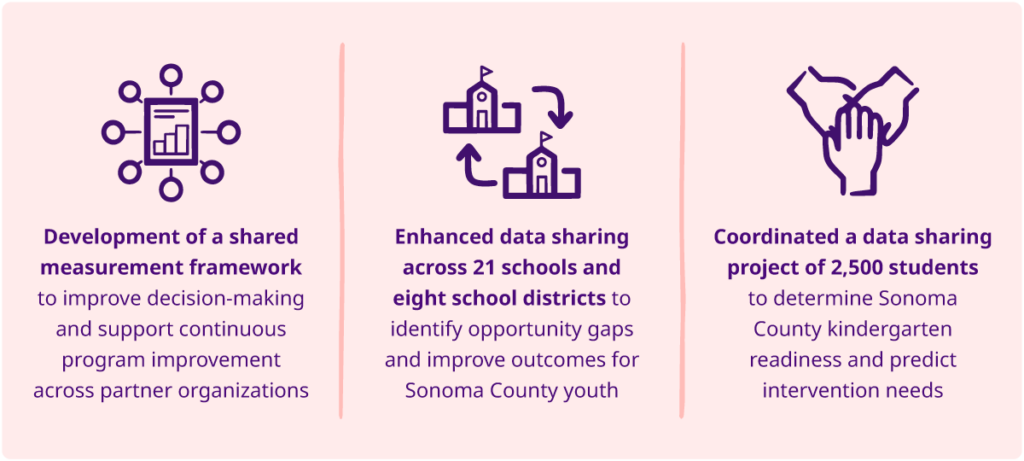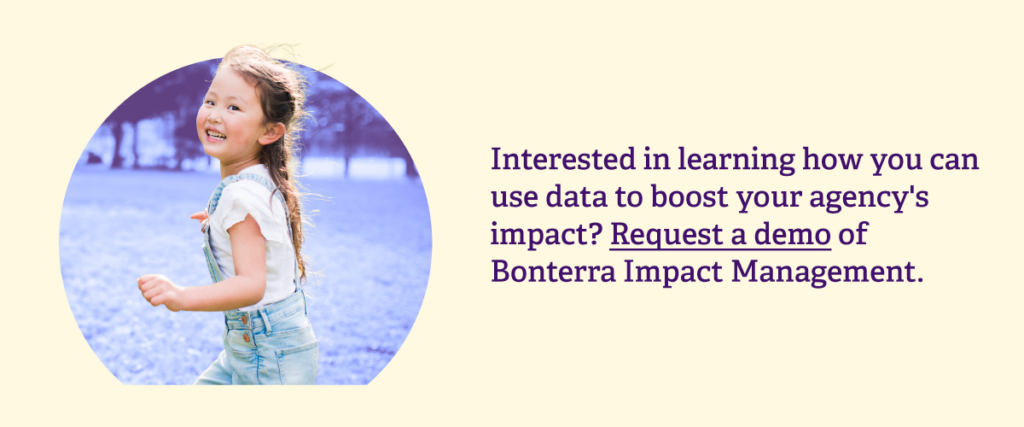Driving evidence-based change in Sonoma County

Background
Sonoma County Human Services “[bridges] people to opportunity through responsive safety net services.” Programs centered on health and food, jobs and income, housing and shelter, as well as older adults and people with disabilities help the county achieve this mission. The county’s collective impact initiative, Upstream Investments, is dedicated to improving well-being, advancing social and racial equity, uprooting poverty, and reducing monetary and societal costs to the community through a results-based prevention model.

Customer profile
- Users: 500+
- Product: Impact Management Enterprise
- Sector: public sector
- Vertical: health and human services
Challenges
The county needed a technology solution to support its shared outcome measurement system, which enhances data use, impact measurement, and collaboration across partner organizations.
Concerned that a growing share of the county’s general fund was going toward criminal justice costs, county officials sought ways to “invest early, invest wiser, and invest together” to drive greater impact. This led them to establish Upstream Investments with the guiding principle that all Sonoma County partners work toward advancing racial and social equity and uprooting poverty. As part of this initiative, the county provides valuable data and insights to partner organizations of varying sizes and areas of interest, some of which do not have the budget or expertise to gather such data or interpret it. In order to support this shared outcome measurement system, they needed a technology solution that unified data management, impact measurement, and collaboration capabilities.
Outcomes

Sonoma County’s shared outcome measurement system, supported by Bonterra Impact Management, transitions from reactive to preventative case management, while addressing inequities revealed through data and reports. For example, Sonoma County’s Road to the Early Achievement and Development of Youth (READY) project coordinates data collaboration among 21 schools across eight school districts. They profiled about 2,500 kindergarten students to determine readiness or predict intervention needs earlier to reduce the chances of them falling behind in school.
!["[Before using Bonterra Impact Management], it was messy. We wanted to know if what we were doing to support the nonprofits was meaningful enough and helping them do better work in the community. We just couldn't make all those claims before. but now, with the data and the new use of the results-based accountability framework, we feel like we can answer those questions better."](https://www.bonterratech.com/wp-content/uploads/2024/11/bonterra-sonoma-county_quote-1024x439.png)
READY data is also used to identify opportunity gaps for families and inequitable access to early learning resources. Additionally, partners using the shared outcome measurement system are encouraged to adopt the social determinants of health (SDOH) screen which asks each client questions about their identity groups, family structure, economic status (e.g., employment and housing), and any needs related to material support such as childcare or food. This in turn helps staff understand participants’ needs to better coordinate service referrals and design programs.

Work with Bonterra



